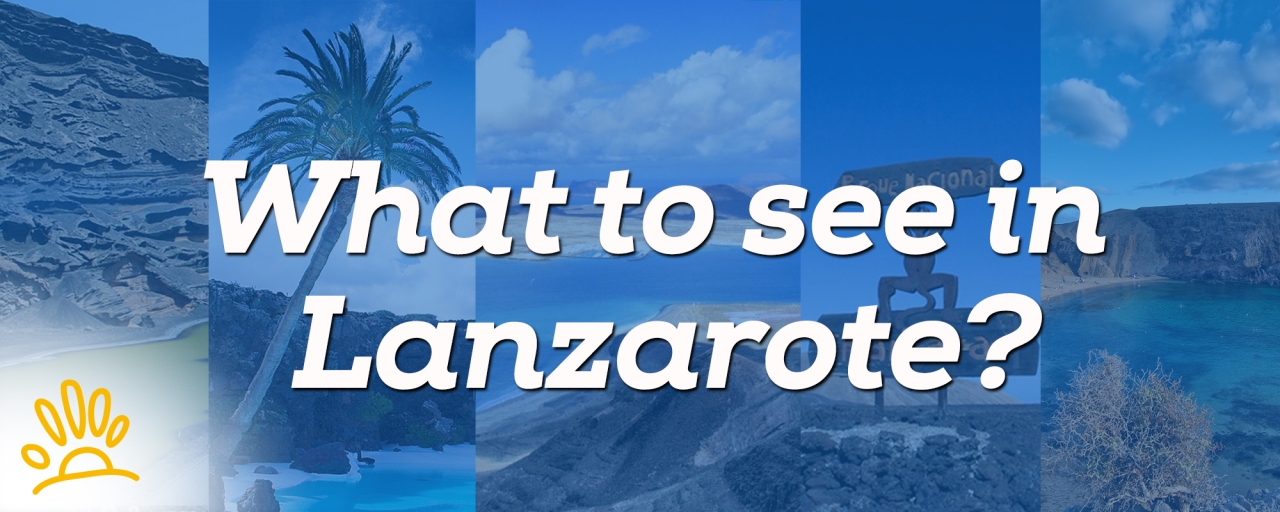Lanzarote is an island full of contrasts. Between the sea and the volcanic earth they have created stunning locations and you will definitely want to visit when you're in Lanzarote. The island, like the rest of the Canaries, has very good weather most of the year, so no matter when you visit it, you can go all around the island and fall in love with each of its amazing corners. Volcanoes, white and black sand incredible beaches, clear waters, marine funds, resorts ... definitely, Lanzarote has a lot to visit and here are the "Must-see places" in Lanzarote you won't want to miss:
When you go to visit the "Touristic centres" we recommend buying the bonus of three, four or six centers, depending on the time you have. You can do it online or at any box office of the CACT as the Timanfaya Lanzarote, Jameos del Agua, Cueva de los Verdes and the Mirador del Río.
Timanfaya
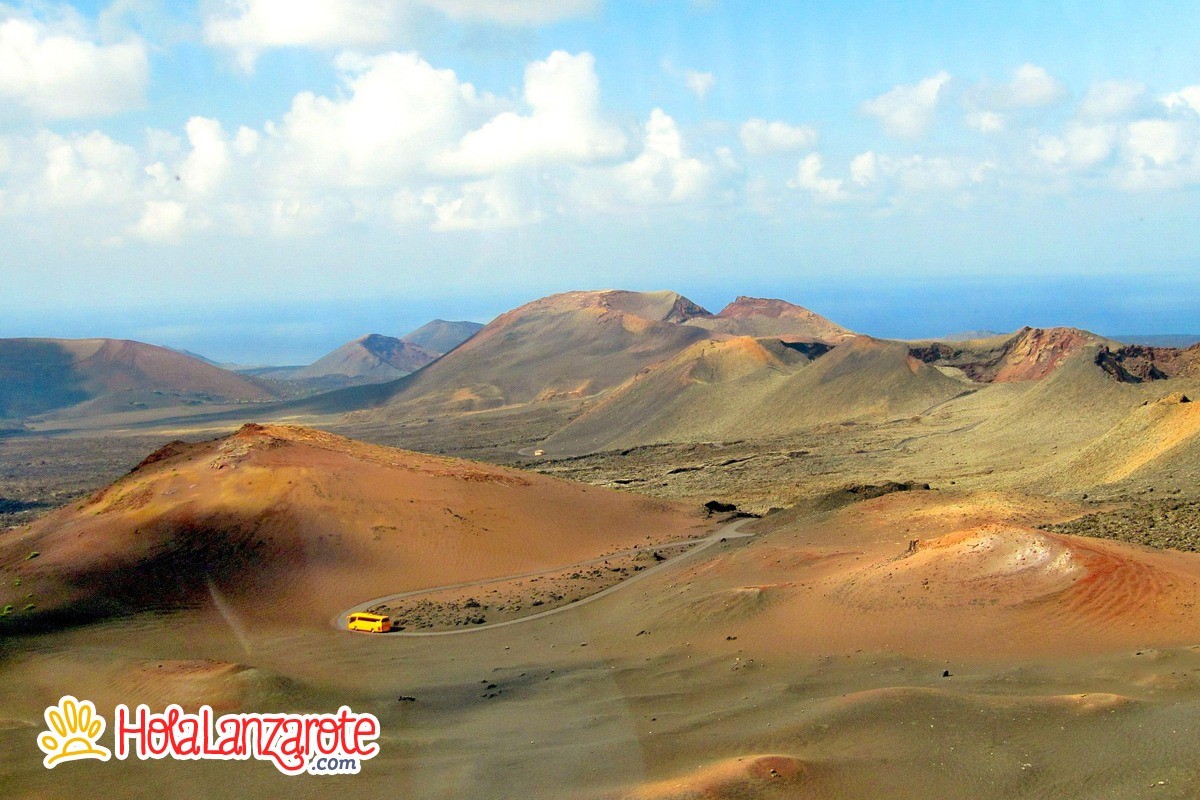
The “Montañas del Fuego” that means Mountains of Fire, are located in the southwest of the island, in the village Yaiza. In “Timanfaya” you can find a unique surface that leaves you speechless. The black and red sands welcomes you as you get closer to the national park and the volcanic trace left by the violent eruptions between 1730 and 1736, for six consecutive years.
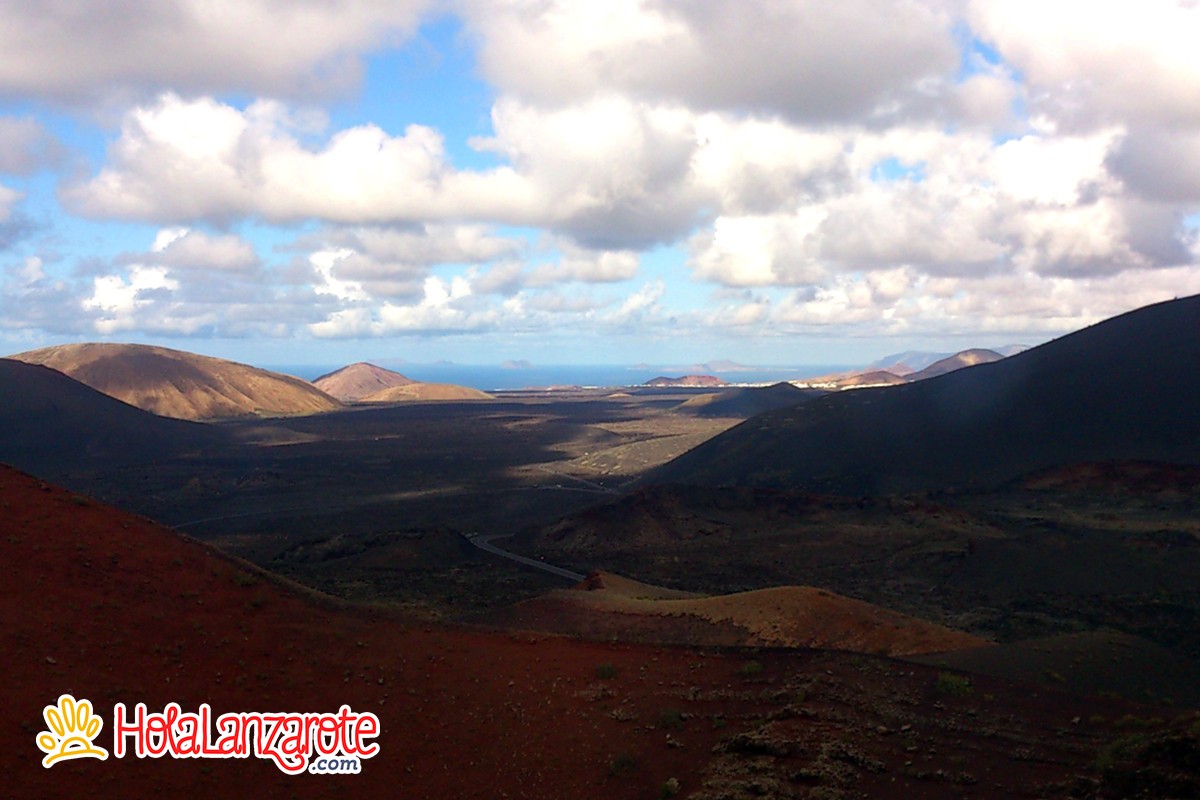
In Timanfaya show up his most famous volcanoes: Montaña de Fuego (Mountain of Fire), La Caldera del Corazoncillo (The Little Heart Cauldron), or Rajada Mountain. After all eruptions the volcanoes of Lanzarote have been calm for most part, however, Timanfaya volcanic activity continues, this being the main attraction for your visit. Follow the Volcano Routeuta and don't miss the chance to see the incredible demonstrations of volcanic activity in Lanzarote.
Jameos del Agua
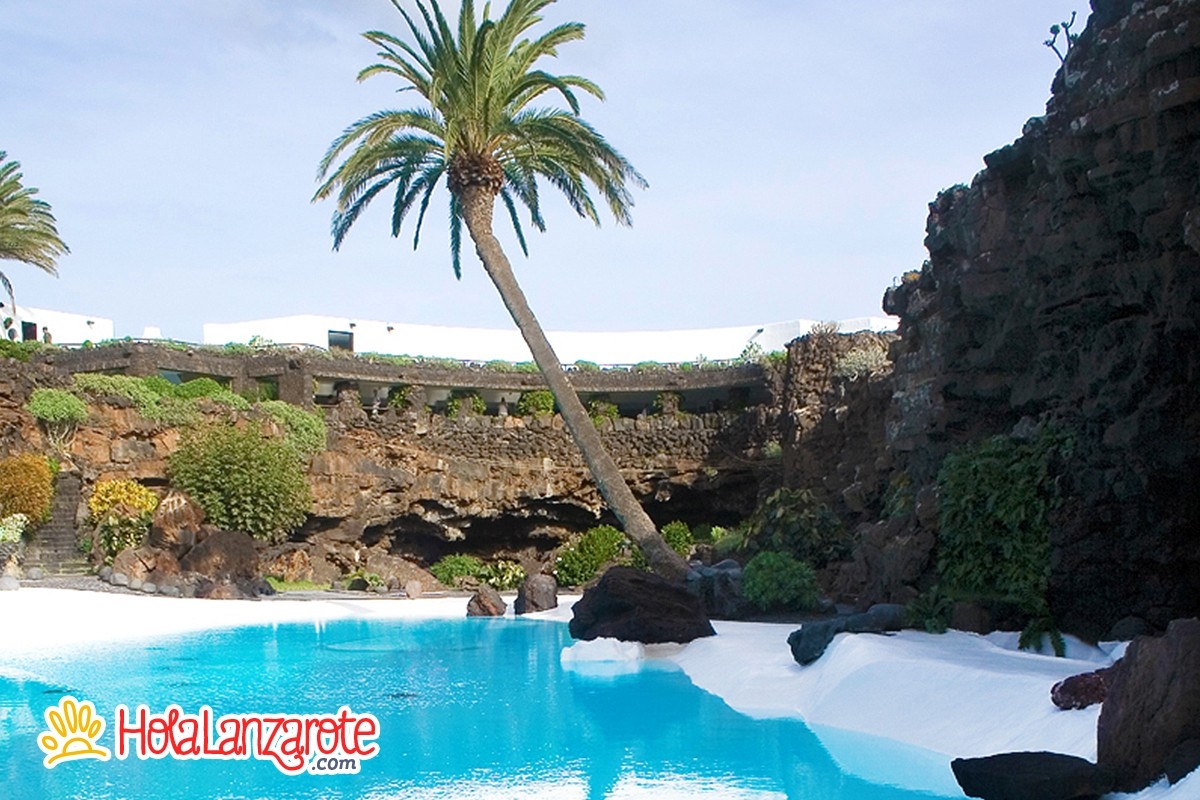
The “Jameos del Agua” are located inside the volcanic tunnel, 6km in length, produced by the eruption of the volcano of the Crown (Volcán de la Corona). “Jameos del Agua” are located in the nearest part of the coast of this tunnel. They are named because of the existence of an internal lake which constitutes a specific geological formation, which arises from a filtration on the earth because it is below the sea level. What´s the meaning of the name “Jameos del Agua”, it’s really simple, it just means “Water Jameos” which is the aboriginal name for the tunnel entrance.
This underground aquatic habitat, results on the existence of blind crabs (Munidopsis polymorpha) that pace the rocky bottom of the lake and are whitish in color and one centimeter in length, this rarity that has made them a symbol of “Jameos del Agua”.
There are two bars that have been built in the gaping holes of the rocks and also the dance floors demonstrate that the Jameos are also used as a disco and nightclub. In Jameos, beyond Jameo Grande, there is a spectacular Auditorium that takes advantage of the inside of the volcanic cave and in which events are held to enrich the culture of the island.
That's why Jameos del Agua is the perfect place to host many cultural and music events.
Cueva de los Verdes
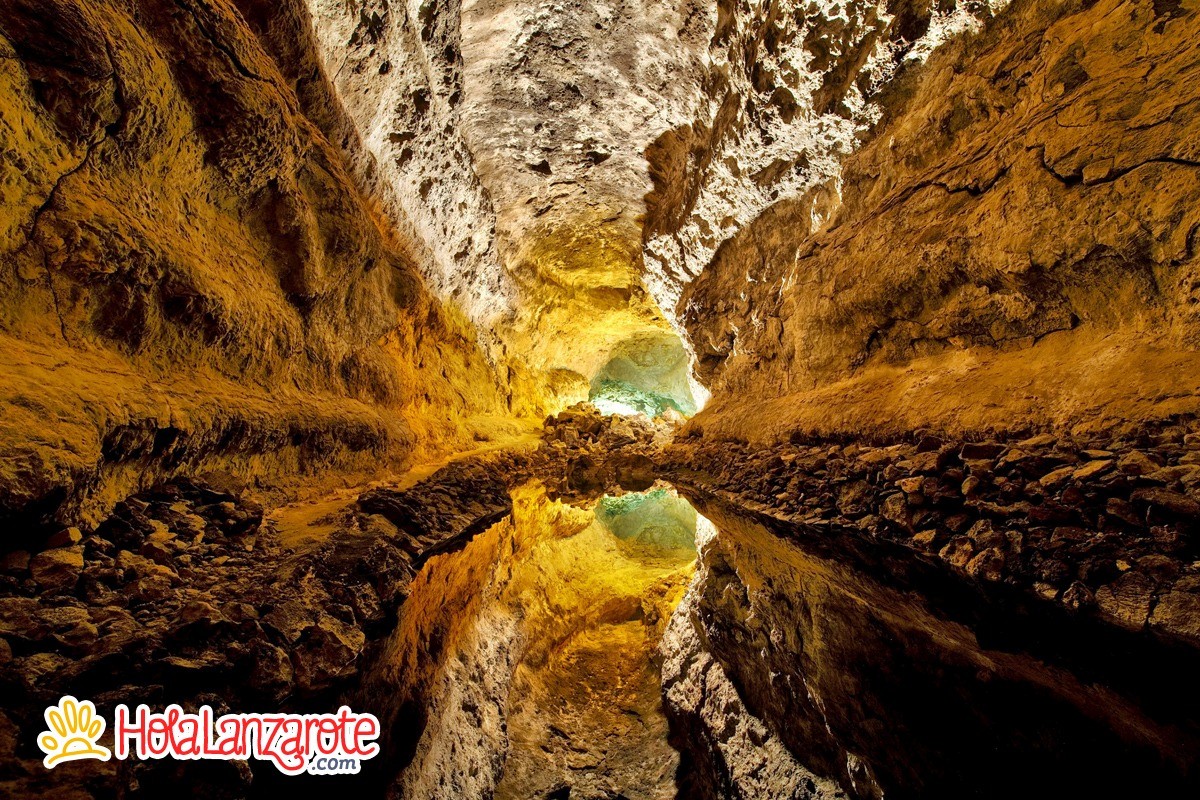
“Cueva de los Verdes” is located in the north of the island of Lanzarote, in the municipality of Haria, and integrated into the vast volcanic landscape of the Natural Monument of “Malpaís de La Corona”. Just in front of Jameos del Agua, because is part of the same underground volcanic tunnel over 6 kilometers long that reaches the sea.
The visit to the Cueva de los Verdes shows a kilometer of superimposed galleries and some spaces that grow to up to three levels. The tunnel is about 50 meters in height and about 15 meters wide, approximately.
Part of what can be seen in this unusual underground landscape are the peculiar formations, lava channels, solid blocks dragged by the current, salt deposits and layers of solidified lava. In the cave there is a unique range of colors, including the vaults and walls, with reddish due to the oxidation of iron and ocher color with reflections of light on the salt produced by water filtration. You'll feel like a true explorer.
Mirador del Río
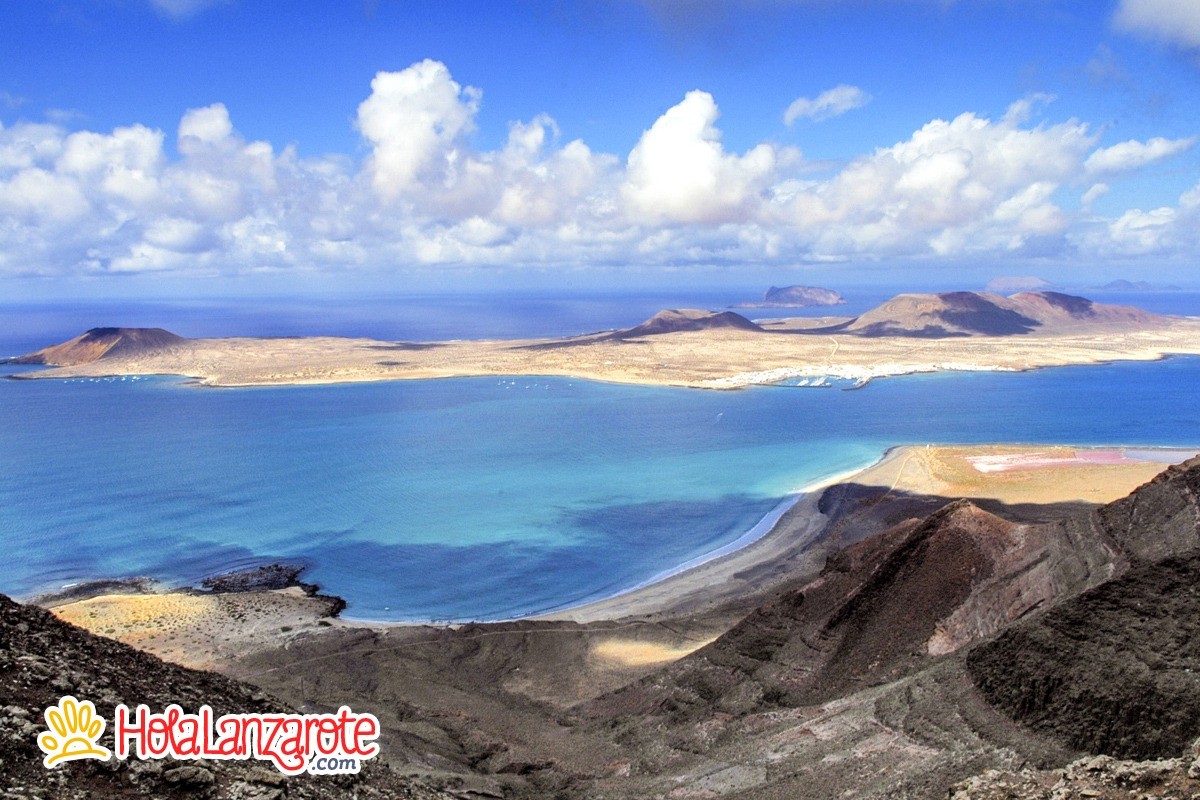
The Mirador del Rio is one of the highest points in Lanzarote. At 476 meters above sea level and oriented to the northwest, The “Mirador del Río, that means “Viewpoint of the river”, is a privileged place to see the island of La Graciosa, part of the archipelago Chinijo along with Montaña Clara, Alegranza, Roque del Este and Roque del Oeste.
As an intrinsic part of the island, César Manrique also left his name in the reconstruction of the old artillery position. Mirador del Rio is one of Manrique's creations that It almost goes unnoticed for being between two rock formations in the “Risco de Famara”. It is one of the most representative creations of Manrique and his project to integrate art and nature: the viewpoint offers several places to observe the stunning scenery.
Charco de San Ginés
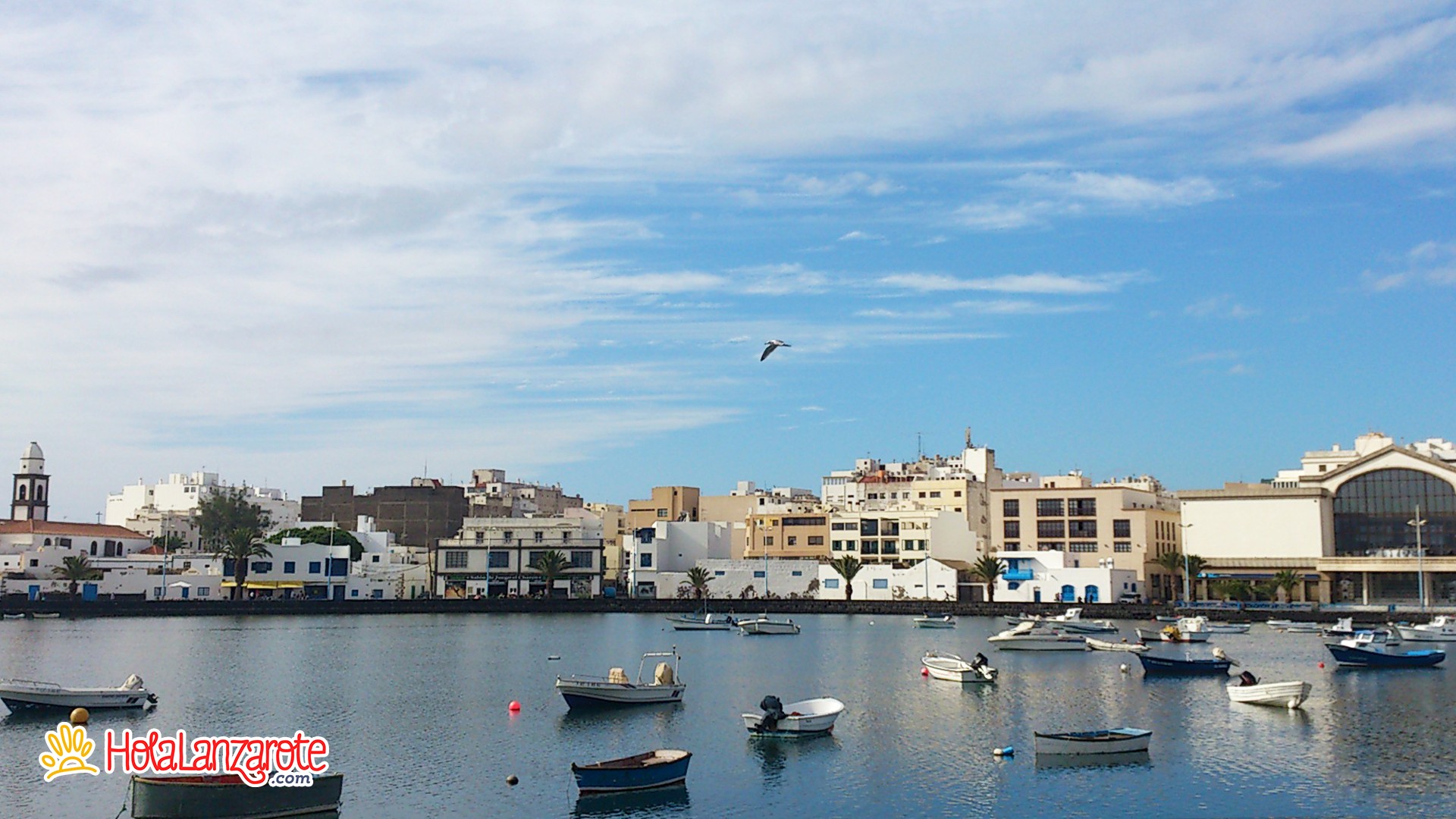
El Charco de San Gines is a characteristic place in Arrecife. The iconic lagoon formed by the entrance of seawater, with rest of barges and small boats of fishermen welcomes visitors and is a must for tourists visiting the old town. The Charco is surrounded by little white houses of fishermen; the way it started the first buildings of what would be, after Teguise, Lanzarote's capital. The first chapel of the city is very close to the Charco and you can almost see it from anywhere in the pond, and is now the Church of San Ginés.
Beside the Charco is the Barrio de la Puntilla, consisting of old houses, the church, the city of Arrecife, Balls Bridge and San Gabriel Castle, Main Street Calle Real and the “Avenida Maritima” next to the sea. This is an historical and entertaining ride that will bring you to all these places that tell the story of how it has shaped the city and lifestyle in Arrecife.
Salinas de Janubio
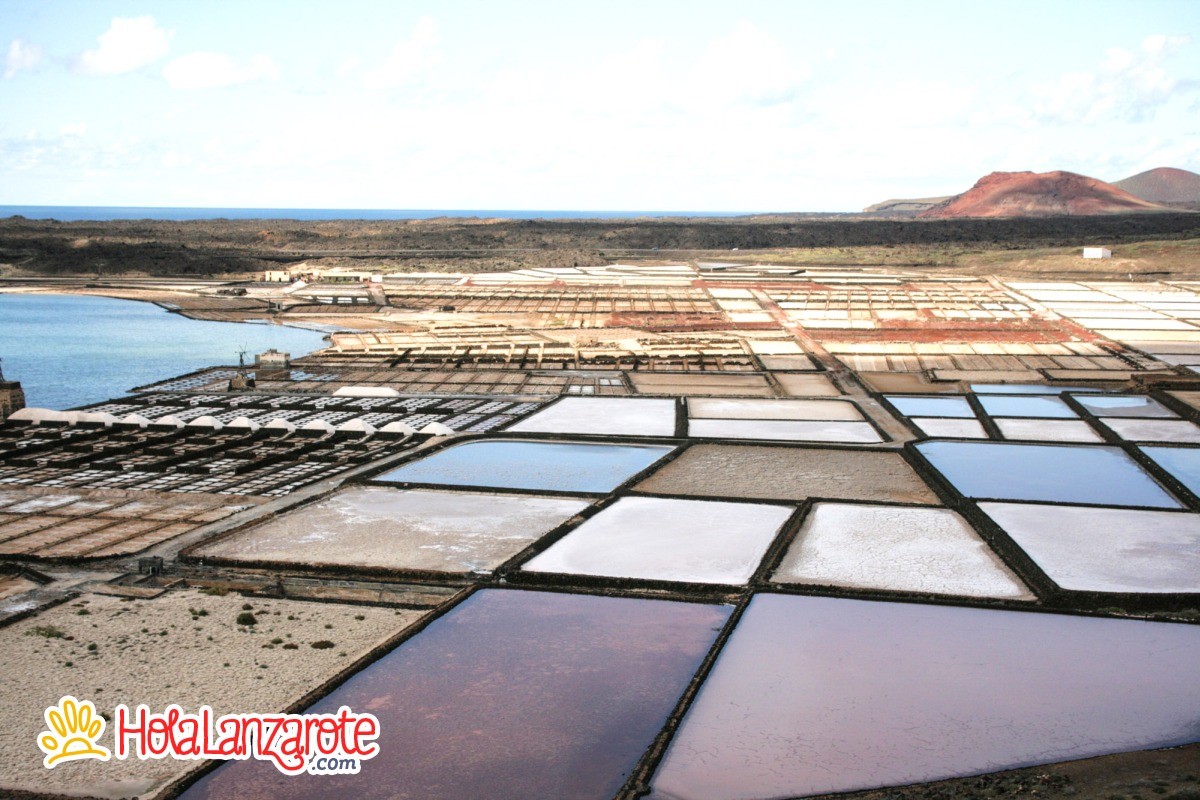
The “Salinas del Janubio”, or Janubio saltworks, declared nature reserve are located in the South-West of Lanzarote, near the village of Yaiza. The Salinas are one of the representative landscapes of the island. In the past, one of the foundations of the island’s economy was salt production, but few remain operational except for the Salinas de Janubio and Guatiza.
The southern salinar continues its traditional activity, despite the drop in productivity. It has a construction based on natural volcanic stone; with its windmills and the resulting product of macerating in salt cookers create a picture to remember.
You can find the Salinas on the road to El Golfo, also on your way to Los Hervideros.
Los Hervideros
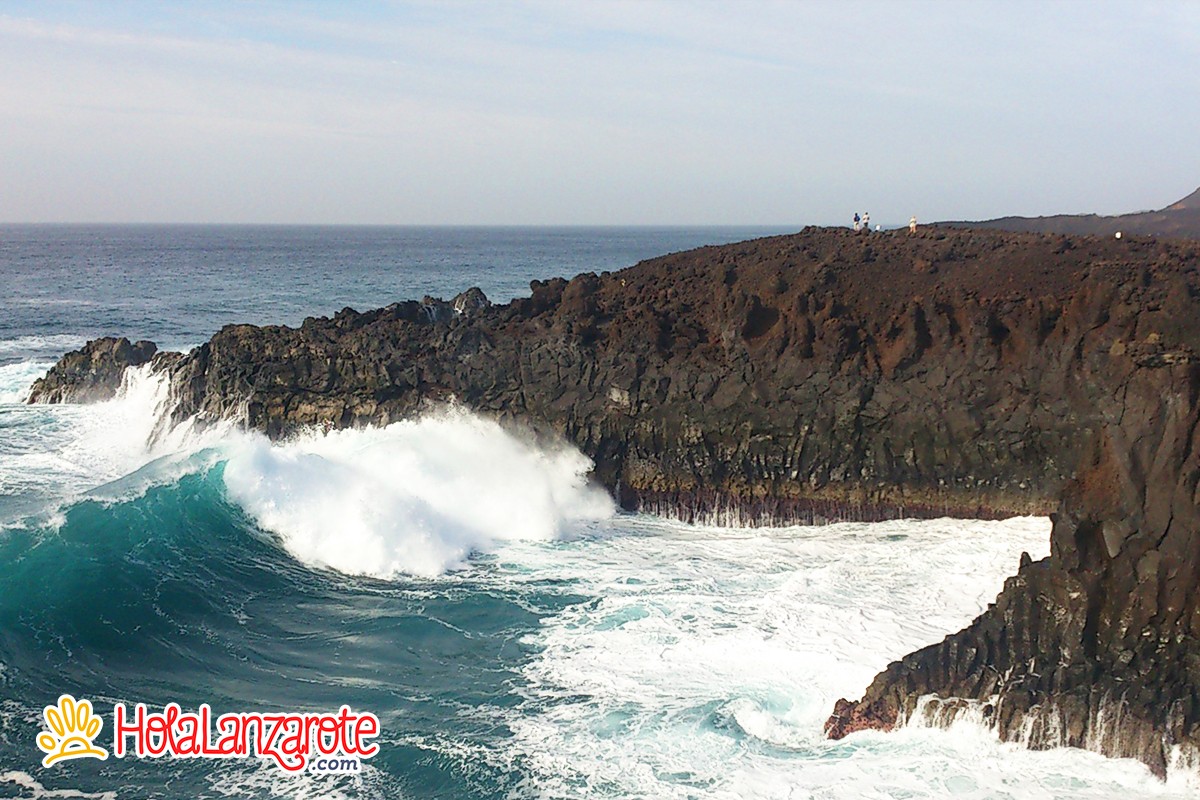
A spectacle of nature in a series of cliffs that were created when magma reached the sea and became solidified rock. These blowholes and caves dating of volcanic eruptions of 1730-1736 and have been sculpted by erosion. The force of the waves creates a burst of water rising to the surface through the holes and crevices in the rocks, as if boiling water and hence its name “Los Hervideros” or, translated literally “The Boilers”. Visitors can enjoy this natural wonder from the trails.
It is a tourist attraction for visitors, much frequented by its paths surrounded by the curious forms of solidified lava from where you can witness the force of the sea. The stone paths allow a safe visit, with a kind of balcony that allows you to see the immensity of the sea and when, on occasion, the Atlantic is rough, you can see surges in the sea in which foam is projected into the sky and is accompanied by a blast worthy of remembering.
These points are used for taking photos or record a video with a unique and incomparable background.
El Charco Verde o Laguna de los Clicos
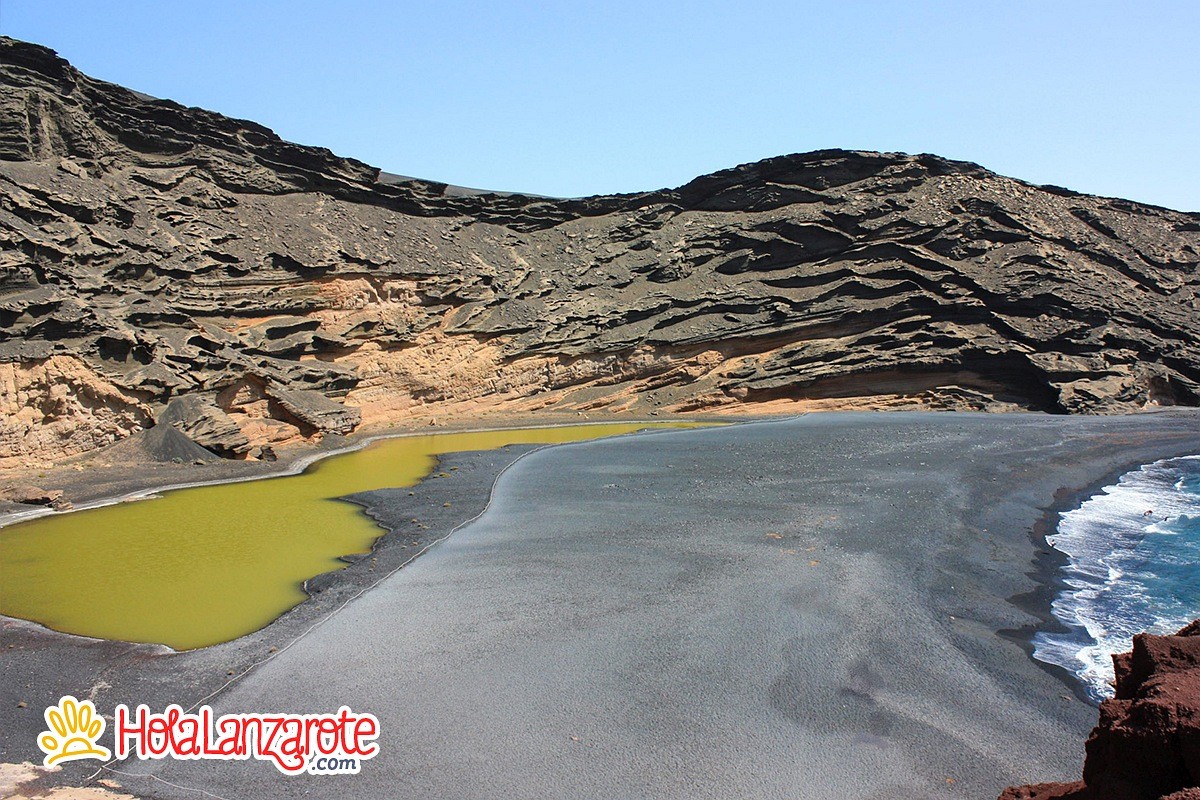
Also known as “Charco de los Clicos”, this green pond (Charco verde), is inside the great crater open to the sea located in El Golfo. It is formed by marine flora in the water, which gives it its distinctive green color. This unusual coloration is specifically due to the accumulation of seaweed: marine ruppia.
The lagoon connected to the ocean by underground cracks, is separated from the sea by a black sand beach, that’s a great attraction for visitors.
With an impressive volcanic landscape around the Gulf is the perfect setting for a picture with a colorful background with the green of the pond, the black sand, the red gravel of the cliff and the blue of the sky and sea. You can’t miss this landmark of Lanzarote and appreciate it in its entire splendor from the mountain, which has a unique viewpoint.
It is also recommended to go down to the beach and watch every texture and change in the landscape. You should wear comfortable shoes and that you do not mind leaving filled with red sand and black sand on the way.
Playa Papagayo
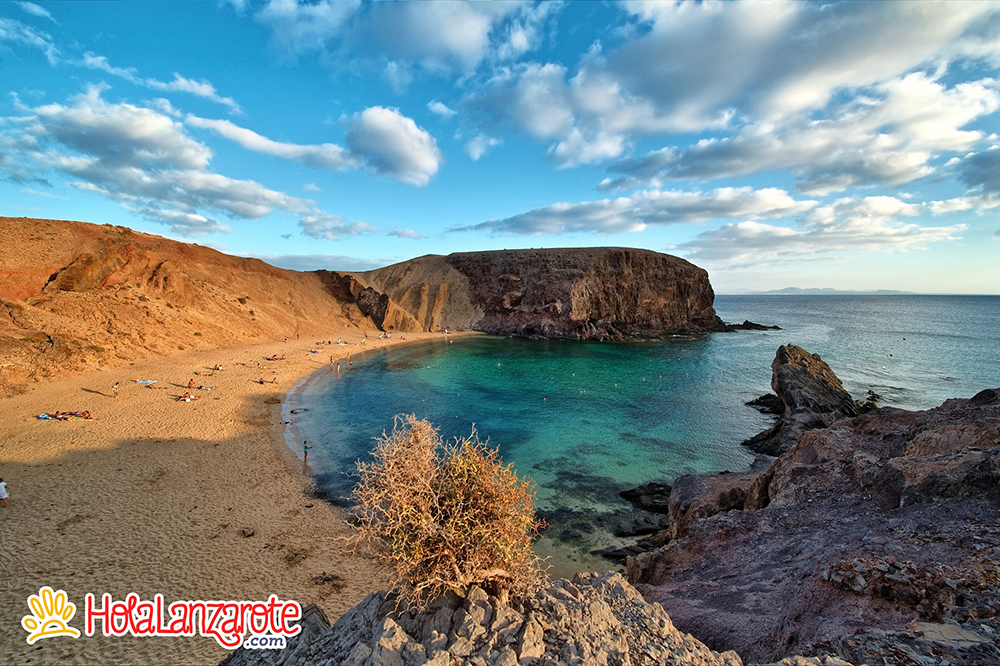
The Papagayo Beach is located within the Natural Monument of Los Ajaches, south of Lanzarote. It’s a beautiful cove, with calm turquoise waters. This beach is at the southern end of the island, with a landscape of white sand bordered by walls of the cliff. It’s a Tourist’s favorite, te locals too.
This beach is highly recommended and is considered one of the best beaches on Lanzarote. It's great to go with the family, because it has calm waters and it's protected of the wind. Also, this beach is great to snorkel and scuba dive.
In this cove is accessed by dirt tracks, which enlarges its exclusive appeal. Pay attention to the signs! You pay about 3 € to enter and leave the vehicle in a parking next to the beaches.
Caleta de Famara
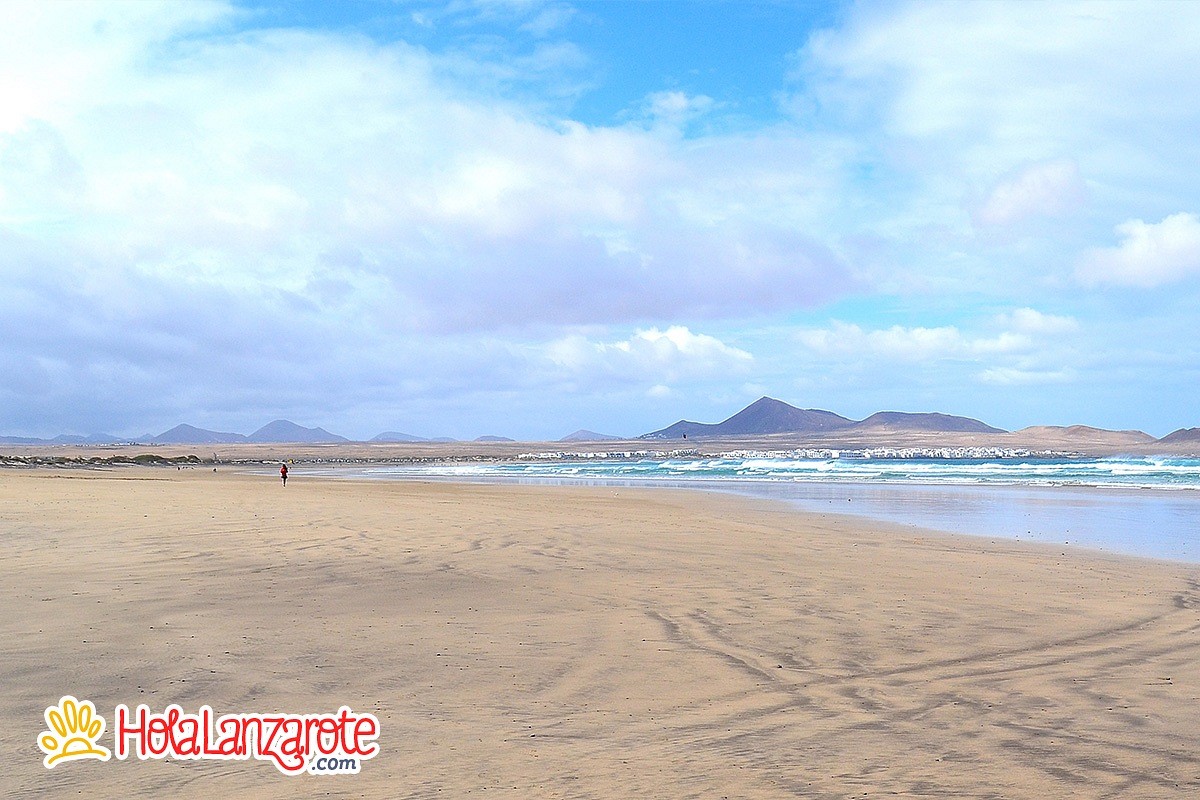
Under the amazing Famara risk, there's a long and beautiful sandy beach with the same name. With more than 6 kilometers, this is the biggest beach in Lanzarote and definetly one of the favorites for a lot of locals and tourists.
It is a beach with high winds and strong waves, which makes it ideal for those who practice water sports such as surfing, bodyboarding, kitesurfing or windsurfing.
Famara Beach is also called "Famaradise", look it up in Social Media. It's Surfers Paradise, because of its waves.
It can be reached by bus and there is plenty of parking on the long avenue, even in busy times like weekends and summer
La Graciosa
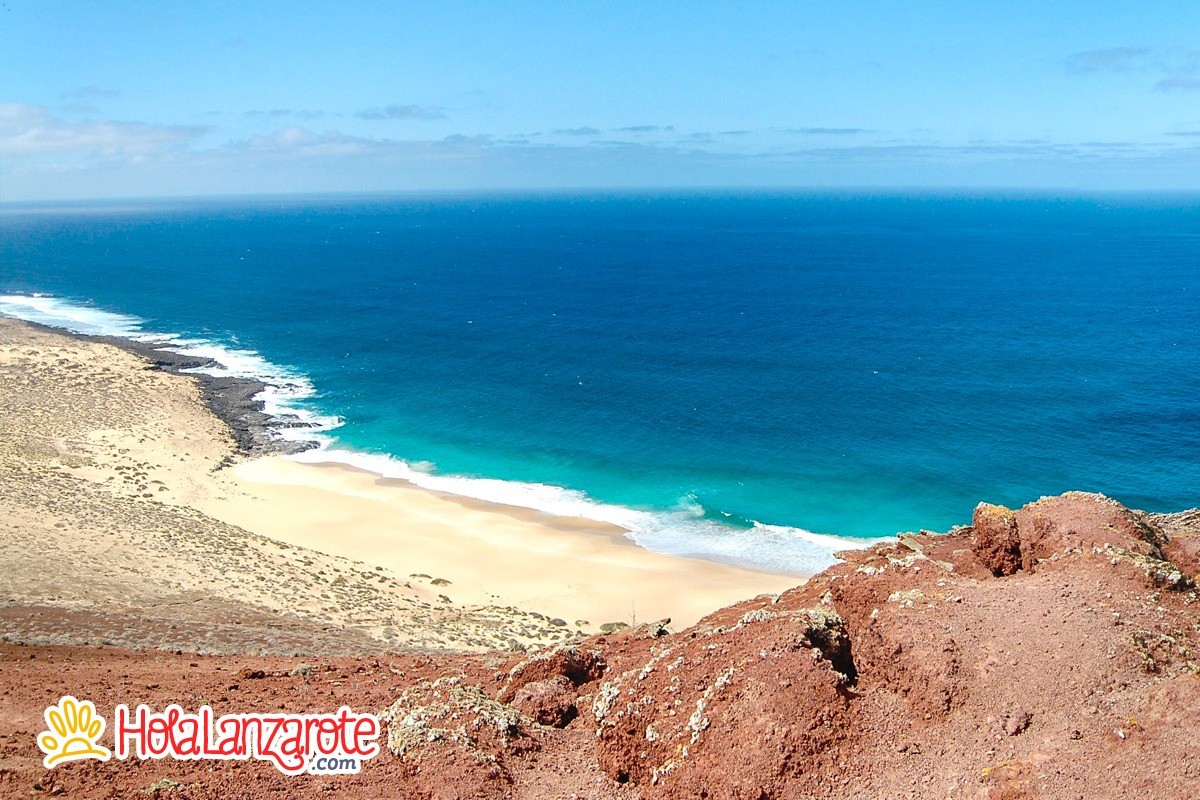
If you have time, you can visit La Graciosa from Lanzarote, which it is in the Chinijo archipelago north of Lanzarote. You can visit departing from the port of Órzola.
The island has 7 more spectacular than the other main beaches. The most famous is the Playa de Las Conchas, with its white sand and paradisiacal stamp; unique for relaxation. Another beautiful beaches that we can find are: Playa De La Laja, Playa De El Salado, French Beach, Playa De La Cocina, Lambra Beach and Caleta de Arriba.
You can go and return the same day, or if you prefer to opt for any of the accommodation in Caleta de Sebo to get to know the island.



